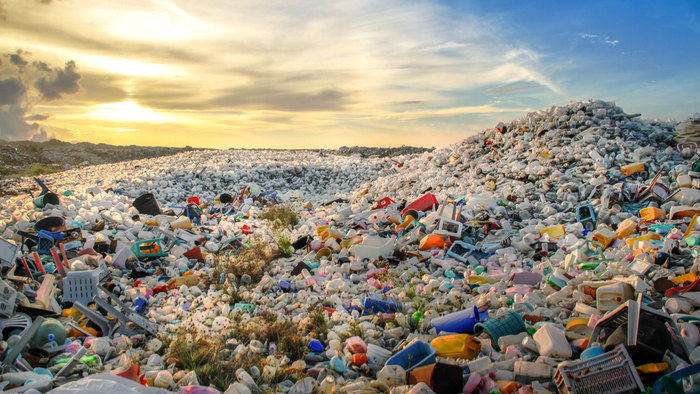Plastic Pollution
Plastic pollution is the accumulation of synthetic plastic products in the environment to the point that they create problems for wildlife and their habitats as well as for human populations. Plastics that act as pollutants are categorized by size into micro-, meso-, or macro debris.
Background Information
Plastic pollution has emerged as one of the biggest environmental challenges, as the world's ability to deal with it is being overwhelmed by the rapidly increasing production of disposable plastic products. Plastic pollution is most noticeable in developing countries, where garbage collection systems are frequently ineffective or not existing. However, in the developed world, particularly the countries with low recycling rates, also has difficulty to gather discarded plastics and take proper recycling measure. Plastic trash has become so pervasive that efforts have been made by the United Nations to propose a global treaty.

Causes of Plastic Pollution
#1. Throw-away culture of plastic products
Plastics offer conveniences more than any material that ever exists. Consequently, single-use plastics now account for 40% of all plastic produced globally each year. To make matters worse, many of these products, such as plastic bags and food wrappers, have a short lifespan but can last for hundreds of years in the environment. People around the worlds tend to use plastics for single time only especially on things like straws, plastic bags, and plastic bottles. This might make you wonder, “Why do people even manufacture products like plastic bottles that contain water that usable for one time only? Isn’t that very harmful to the environment?” The main reason of this is because of the low production cost of using plastics in packaging. So, this has made us indivisible from using plastic products in our daily lives.
#2. Exponential growth of plastic products manufactured
From about 2 million tonnes per year in 1950 to 381 million tonnes per year in 2015, production increased at an exponential rate. By 2050, production is expected to more than double. Approximately 8 million tonnes of plastic waste escapes into the oceans each year from coastal nations. That's the same as putting five garbage bags full of trash on every foot of coastline on the planet.
Plastic Waste per Person
The chart depicts the per capita rate of plastic waste generation, which is measured in kilogrammes per person per day. It should be noted that these figures represent total plastic waste generation and do not consider differences in waste management, recycling, or incineration. As a result, they do not represent the amount of plastic that could end up in the ocean or other waterways.
How To Tackle Plastic Pollution
- The majority of our current approaches to addressing the problem of global plastic pollution are focused on very low-impact solutions such as banning plastic straw.
- While these approaches are well-intended, they will be quickly absorbed by the expansion of global plastics production.
- We must concentrate on high-impact solutions. Understanding the global picture of plastic pollution aids us in this endeavour.
-
High-impact approaches
- Infrastructure for effective waste management must be developed in all countries.
- Stop trading in plastics from high-income to low- or middle-income countries unless sufficient investment is made in waste management infrastructure.
- Strict legislation and waste management in the fishing industry
References
- Parker, L. (2019, June 7). The world’s plastic pollution crisis explained. National Geographic. https://www.nationalgeographic.com/environment/article/plastic-pollution
- Ritchie, H., & Roser, M. (2018). Plastic pollution. Our World in Data. https://ourworldindata.org/plastic-pollution